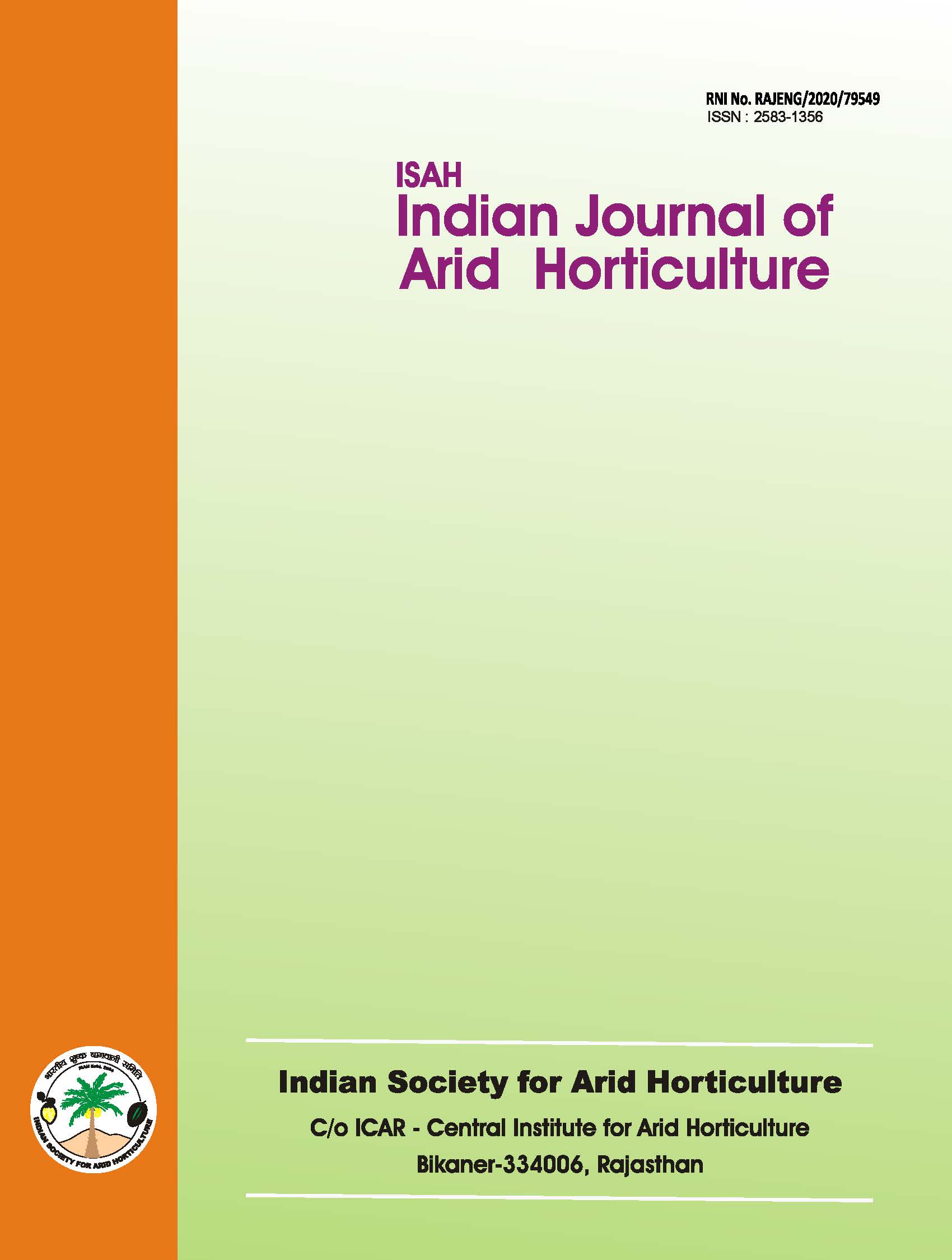Performance of Sweet Potato Germplasm in Arid Region of North-Western Rajasthan
Keywords:
significant potential, cardiovascular disease-preventingAbstract
Tuber crops are among the oldest cultivated plants on Earth. In many regions, especially in the wet tropics, they were staple food sources sustaining large populations before the introduction of cereals. Today, tuber crops are the second most important food crops in developing countries, closely following cereals (Rathore, 2016). These crops are cultivated with low inputs but serve as a significant source of income and employment, particularly in marginal areas. Primarily consumed by the poorest populations, they contribute greatly to food security and hold high cultural significance (Lebot, 2009). Sweet potato (Ipomoea batatas L. Lam.), belonging to the family Convolvulaceae, is an important tuberous root crop with significant potential for use in food, feed, and industrial sectors, especially in starch, flour, glucose, and alcohol production. It is a rich source of vitamins A, C, B2, B6, and E, along with dietary fibers, potassium, copper, manganese, and iron. Due to its high nutritional content and its anti-carcinogenic and cardiovascular disease-preventing properties, sweet potato is recognized as a health food (John, 2011). It is widely cultivated in tropical and warm temperate regions globally. In developing countries, sweet potato ranks fifth in economic value, sixth in dry matter production, seventh in energy production, and ninth in protein production (Lobenstein, 2009). In India, it is the third most important tuber crop after potato and cassava. Globally, India ranks twelfth in area, eighth in production, and fifth in productivity. The crop is predominantly grown as a rainfed crop in Eastern India, mainly in Odisha, West Bengal, Uttar Pradesh, Bihar, and Jharkhand, accounting for 77% of the total cultivated area and 82% of total production (Edison et al., 2009). Sweet potato can be grown in a wide range of soils and climatic conditions. While it adapts well to various soil types, sandy or sandy loam soils with good porosity, aeration, and reasonably high organic matter content, along with a permeable subsoil, are considered ideal for its cultivation (Jansson & Ramon, 1991; Bouwkamp, 1985).Downloads
References
Bouwkamp, J.C. (1985). Production Requirements. In: Bouwkamp, J.C. (Ed.), Sweet Potato Products: A Natural Resource for the Tropics. CRC Press.
Edison, S., Unnikrishnan, M., Santosh, S., & Vimala, B. (2009). Tuber Crops Research in India – An Overview. Central Tuber Crops Research Institute, Thiruvananthapuram.
Jansson, R.K., & Ramon, D.M. (1991). Sweet Potato Pest Management: A Global Perspective. Westview Press.
John, S. (2011). Nutritional Benefits of Sweet Potato and Its Role in Disease Prevention. Journal of Food and Nutrition Sciences, 5(2), 120-128.
Lebot, V. (2009). Tropical Root and Tuber Crops: Cassava, Sweet Potato, Yams, and Aroids. CABI Publishing.
Lobenstein, G. (2009). Sweet Potato: Its Economic Value and Global Production Trends. Agricultural Research Journal, 22(3), 45-60.
Rathore, N.S. (2016). Tuber Crops and Their Role in Food Security. Indian Journal of Agricultural Research, 50(1), 15-25.

